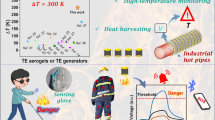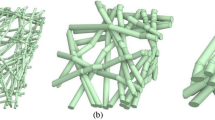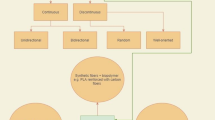Abstract
This paper tackles the influence of the functionalization of polystyrene and graphene oxide (GO) composites on the flammability characteristics. A microscale combustion calorimeter (MCC) was used to experimentally determine the heat release capacity (HRC), the specific heat release rate (HRR) and the total heat released (THR). Neural models were designed that correlate the THR with a number of parameters related to the composition and type of flame retardant used, the heating rate, the amount of residue, the HRC, the peak heat release rate (PHRR), the temperature at the peak pyrolysis rate (TPHRR) and the time elapsed until the occurrence of the peak heat release rate (Time). The best results in the training, validation and testing stages were achieved with the neural model with 9 neurons in the input layer, 40 neurons in the hidden layer and one neuron in the output layer. This model was incorporated into an optimization procedure, based on a genetic algorithm, to establish the values of the input parameters used in the training of the neural networks, in order to generate a minimum THR value, which is the output parameter. Since the synthesis of polystyrene particles with different GO concentrations is costly, this research helps to reduce the number of experimental tests and allows to determine the best GO concentration by means of neural models and genetic algorithms.






Similar content being viewed by others
References
Lyon RE, Takemori MT, Safronava N. Stoliarov SI Walters RN, A molecular basis for polymer flammability. Polymer. 2009;50:2608–17. https://doi.org/10.1016/j.polymer.2009.03.047.
Nie C, Yang J, Deng G, Feng Y, Shi Y. Supermolecular assembly networks functionalized MXene toward fire-resistant thermoplastic polyurethane nanocomposites. J Therm Anal Calorim. 2023;148:10051–63. https://doi.org/10.1007/s10973-023-12366-z.
Liu M, Chen K, Shi Y, Wu S, Feng Y, Fu L, Gao J, Tang L, Yang F. Mechanically strong hierarchical nanosystem for fire protection and electromagnetic interference shielding. Compos B: Eng. 2023;261: 110795. https://doi.org/10.1016/j.compositesb.2023.110795.
Liu C, Wu W, Shi Y, Yang F, Liu M, Chen Z, Yu B, Feng Y. Creating MXene/reduced graphene oxide hybrid towards highly fire safe thermoplastic polyurethane nanocomposites. Compos B: Eng. 2020;203: 108486. https://doi.org/10.1016/j.compositesb.2020.108486.
Gao C, Shi Y, Chen Y, Zhu S, Feng Y, Lv Y, Yang F, Liu M, Shui W. Constructing segregated polystyrene composites for excellent fire resistance and electromagnetic wave shielding. J Colloid Interface Sci. 2022;606:1193–204. https://doi.org/10.1016/j.jcis.2021.08.091.
Huang R, Gao C, Shi Y, Fu L, Feng Y, Shui W. Synergistic function between phosphorus containing flame retardant and multi-walled carbon nanotubes towards fire safe polystyrene composites with enhanced electromagnetic interference shielding. Int J Mol Sci. 2022;23:13434. https://doi.org/10.3390/ijms232113434.
Lyon RE, Walters RN, Stoliarov SI. Thermal analysis of flammability. J Therm Anal Calorim. 2007;89:441–8. https://doi.org/10.1007/s10973-006-8257-z.
Lyon RE, Walters RA, Microscale combustion calorimeter (No. DOT/FAA/AR-01/117). Federal Aviation Administration Washington DC Office of Aviation Research, 2002.
Lu H, Wilkie CA. Synergistic effect of carbon nanotubes and decabromodiphenyl oxide/Sb2O3 in improving the flame retardancy of polystyrene. Polym Degrad Stab. 2010;95:564–71. https://doi.org/10.1016/j.polymdegradstab.2009.12.011.
Keshavarz MH, Dashtizadeh A, Motamedoshariati H, Soury H. A simple model for reliable prediction of the specific heat release capacity of polymers as an important characteristic of their flammability. J Therm Anal Calorim. 2017;128:417–26. https://doi.org/10.1007/s10973-016-5935-3.
Parandekar PV, Browning AR, Prakash O. Modeling the flammability characteristics of polymers using quantitative structure–property relationships (QSPR). Polym Eng Sci. 2015;55:1553–9. https://doi.org/10.1002/pen.24093.
Atabaki F, Keshavarz MH, Noorollahy BN. A simple method for the reliable prediction of Char Yield of polymers. Z Anorg Allg Chem. 2017;643:1049–56. https://doi.org/10.1002/zaac.201700197.
Atabaki F, Keshavarz MH, Bastam NN. The simplest model for reliable prediction of the total heat release of polymers for assessment of their combustion properties. J Therm Anal Calorim. 2018;131:2235–42. https://doi.org/10.1007/s10973-017-6776-4.
Khan PM, Roy K. Chemometric modelling of heat release capacity, total heat release and char formation of polymers to assess their flammability characteristics. Mol Inform. 2020;41: e2000030. https://doi.org/10.1002/minf.202000030.
Asante-Okyere S, Xu Q, Mensah RA, Jin C, Ziggah YY. Generalized regression and feed forward back propagation neural networks in modelling flammability characteristics of polymethyl methacrylate (PMMA). Thermochim Acta. 2018;667:79–92. https://doi.org/10.1016/j.tca.2018.07.008.
Mensah RA, Jiang L, Asante-Okyere S, Xu Q, Jin C. Comparative evaluation of the predictability of neural network methods on the flammability characteristics of extruded polystyrene from microscale combustion calorimetry. J Therm Anal Calorim. 2019;138:3055–64. https://doi.org/10.1007/s10973-019-08335-0.
Rein G, Lautenberger CA, Fernandez-Pello C, Torero JL, Urban DL. Application of genetic algorithms and thermogravimetry to determine the kinetics of polyurethane foam in smoldering combustion. Combust Flame. 2006;146:95–108. https://doi.org/10.1016/j.combustflame.2006.04.013.
Lautenberger C, Rein G, Fernandez-Pello C. The application of a genetic algorithm to estimate material properties for fire modeling from bench-scale fire test data. Fire Saf J. 2006;41:204–14. https://doi.org/10.1016/j.firesaf.2005.12.004.
Chang H-C, Park W-H, Kyung-Beom Y, Kim T-K, Lee D-H. Jung W-S, Inverse estimation of properties for charring material using a hybrid genetic algorithm. J Mech Sci Technol. 2011;25:1429–37. https://doi.org/10.1007/s12206-011-0402-3.
Mensah RA, Xiao J, Das O, Jiang L, Xu Q, Alhassan MO. Application of adaptive neuro-fuzzy inference system in flammability parameter prediction. Polymers. 2020;12:122. https://doi.org/10.3390/polym12010122.
Kalathingal MSH, Basak S, Jayeeta M. Artificial neural network modeling and genetic algorithm optimization of process parameters in fluidized bed drying of green tea leaves. J Food Process Eng. 2020;43: e13128. https://doi.org/10.1111/jfpe.13128.
Cardozo SD, Gomes HM, Awruch AM. Optimization of laminated composite plates and shells using genetic algorithms, neural networks and finite elements. Lat Am J Solids Struct. 2011;8:413–27. https://doi.org/10.1590/S1679-78252011000400003.
Stroe M, Cristea M, Matei E, Galatanu A, Cotet LC, Pop LC, Baia M, Danciu V, Anghel I, Baia L, Baibarac MA. Optical properties of composites based on graphene oxide and polystyrene. Molecules. 2020;25:2419. https://doi.org/10.3390/molecules25102419.
Cotet LC, Baia GL, Danciu V. Chemical exfoliation obtaining process of large area graphene based materials (graphene oxide and reduced graphene oxide) OSIM Patent, RO131216B1/ 2018
Cotet LC, Magyari K, Todea M, Dudescu MC, Danciu V, Baia L. Versatile self-assembled graphene oxide membranes obtained in ambient conditions by using a water-ethanol suspension. J Mater Chem A. 2017;5:2132–42. https://doi.org/10.1039/C6TA08898H.
Bao C, Guo Y, Yuan B, Hu Y, Song L. Functionalized graphene oxide for fire safetyapplications of polymers: a combination of condensedphase flame retardantstrategies. J Mater Chem. 2012;22:23057–63. https://doi.org/10.1039/C2JM35001G.
Anghel I, Lisa G, Sofran I-E, Mitroi-Symeonidis F-C, Rusu MM, Baia M, Baia L, Magyari K, Danciu V, Cotet LC, Stroie M, Baibarac M. Pyrolysis and combustion of polystyrene composites based on graphene oxide functionalized with 3-(methacryloyloxy)- propyltrimethoxysilane. J Polym Eng. 2021;41:615–26. https://doi.org/10.1515/polyeng-2021-0071.
ASTM International, Standard Test Method for Determining Flammability Characteristics of Plastics and Other Solid Materials Using Microscale Combustion Calorimetry, (2013).
Walters RN, Safronava N, Lyon RE. A microscale combustion calorimeter study of gas phase combustion of polymers. Combust Flame. 2015;162:855–63. https://doi.org/10.1016/j.combustflame.2014.08.008.
Sonnier R, Ferry L, Longuet C, Laoutid F, Friederich B, Laachachi A, Lopez-Cuesta JM. Combining cone calorimeter and PCFC to determine the mode of action of flame-retardant additives. Polym Adv Technol. 2011;22(7):1091–9. https://doi.org/10.1002/pat.1989.
Lowden LA, Hull TR. Flammability behaviour of wood and a review of the methods for its reduction. Fire Sci Rev. 2013;2:4. https://doi.org/10.1186/2193-0414-2-4.
Ayoola BO, Balachandran R, Frank JH, Mastorakos E, Kaminski CF. Spatially resolved heat release rate measurements in turbulent premixed flames. Combust Flame. 2006;144:1–6. https://doi.org/10.1016/j.combustflame.2005.06.005.
Lyon RE, Speitel L, Walters RN, Crowley S. Fire-resistant elastomers. Fire Mater. 2003;27:195–208. https://doi.org/10.1002/fam.828.
Cogen JM, Lin TS, Lyon RE. Correlations between pyrolysis combustion flow calorimetry and conventional flammability tests with halogen-free flame retardant polyolefin compounds. Fire Mater. 2009;33:33–50. https://doi.org/10.1002/fam.980.
Acknowledgements
This work was supported by a grant of the Ministry of Research, Innovation and Digitization, CNCS/CCCDI—UEFISCDI, Project Number PN-III-P2-2.1-PED-2021-3156, within PNCDI III.
Author information
Authors and Affiliations
Corresponding author
Additional information
Publisher's Note
Springer Nature remains neutral with regard to jurisdictional claims in published maps and institutional affiliations.
Rights and permissions
Springer Nature or its licensor (e.g. a society or other partner) holds exclusive rights to this article under a publishing agreement with the author(s) or other rightsholder(s); author self-archiving of the accepted manuscript version of this article is solely governed by the terms of such publishing agreement and applicable law.
About this article
Cite this article
Anghel, I., Lisa, C., Curteanu, S. et al. The influence of the functionalization of polystyrene and graphene oxide composites on the flammability characteristics: modeling with artificial intelligence tools. J Therm Anal Calorim 149, 2805–2824 (2024). https://doi.org/10.1007/s10973-023-12869-9
Received:
Accepted:
Published:
Issue Date:
DOI: https://doi.org/10.1007/s10973-023-12869-9




